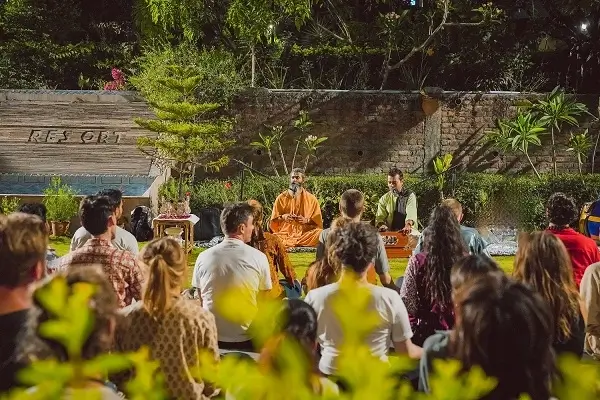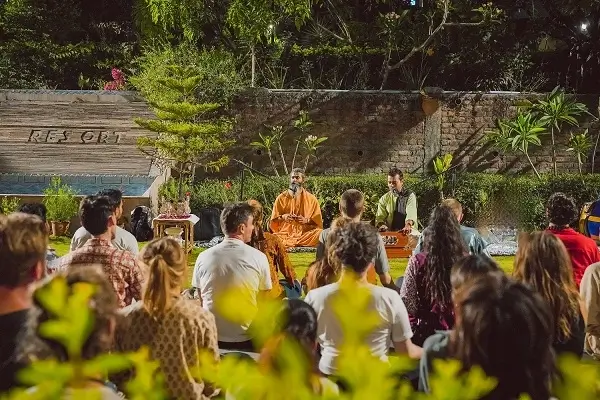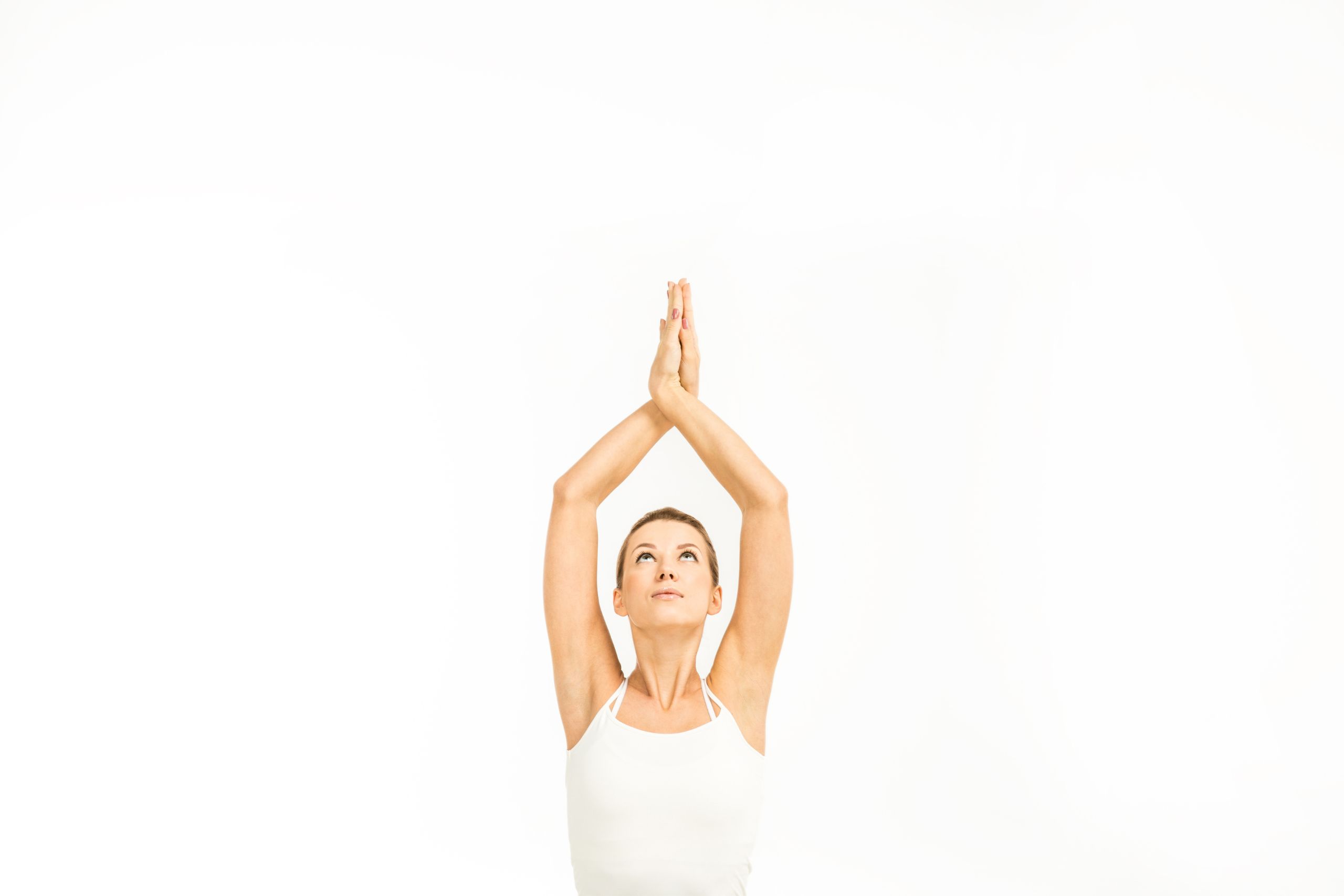Exploring the 8 Limbs of Yoga: A Path to Holistic Living
Table of Contents
- 1. What are the eight limbs of yoga?
- 2. What are the eight limbs of yoga?
- 2.1. Yamas
- 2.1.1. Ahimsa (non-harming)
- 2.1.2. Satya (truthfulness)
- 2.1.3. Asteya (non-stealing)
- 2.1.4. Brahmacharya (abstinence)
- 2.1.5. Aparigraha (non-hoarding)
- 2.2. Niyamas
- 2.3. Asana- Yoga Poses
- 2.4. Pranayama- Breath Control
- 2.5. Pratyahara- Sense Withdrawal
- 2.6. Dharana – Concentration
- 2.7. Dhyana – Meditation
- 2.8. Samadhi – Enlightenment
- 3. Can these 8 limbs of yoga benefit someone spiritually?
You can practice a variety of yoga styles to advance your yoga practice. There are many other types of yoga, such as Hatha, Iyengar, Kundalini, and others. However, Ashtanga yoga is often thought to be the most athletic version and the patanjali sutra’s eight limbs have always been the backbone of perfecting your yogic practice.
Navigate through the blog as we introduce and discuss the eight limbs of yoga, its origin, purpose, and an in-depth introduction along with some tips for incorporating them into your everyday practice.
What are the eight limbs of yoga?
The 196 yoga aphorisms that Maharishi Patanjali, an Indian scholar of great wisdom, penned in 400 CE are collectively referred to as the Yoga Sutra. Similar to how the English term suture means "to stitch together," the word sutra implies "to thread or weave." Even in the present era, these sutras are incredibly precise and full of priceless insight that can be used to stop, terminate, and transcend human suffering.
There are four divisions, or padas, in Patanjali's sutras, or writings. The Sadhana Pada, which is found in section two of yoga, is where the eightfold path is practiced. This eightfold way is referred to in this chapter by Sage Patanjali as "Ashtanga yoga" in Sutra 29 (aphorism 2.29).
To assist us in transcending human suffering and achieving ultimate liberation via self-realization, he devised this route. To put it simply, this lifestyle encourages total health and well-being as well as the harmonious cooperation of the body, mind, and spirit.
What are the eight limbs of yoga?
The Yoga Sutras consist of eight limbs, which should be learned in the order mentioned below. Thus, before moving on to the next level, a person must grasp the previous one.
Yamas
The yamas are the moral precepts that guide our behavior towards one another and the environment. Among them are:
Ahimsa (non-harming)
Ahimsa, which means "non-harming," is the concept of acting in a way that promotes development and enhances the life force in our surroundings. This is how activism and yoga are connecting brains. The goal of social justice is to free and elevate everyone from harm; this is the collective application of ahimsa. Therefore, abstain from doing, saying, or thinking anything that could injure you or others.
Satya (truthfulness)
Regardless of the person we are engaging with, every one of us has a mask on or a distinct personality. Yoga asks us to take off the mask, discover who we are, and act from that place. Although it's not always the easy route, telling the truth is the right thing to do. We practice Satya when we speak out against injustice inside a system that wants to silence us.
Asteya (non-stealing)
This rule goes beyond the simple statement, "Do not take material items from others." Respecting the energy, time, and resources of others is important. We need to establish and respect boundaries if we are to practice Asteya in our interpersonal relationships. Furthermore, it is against this aspect of yoga itself to appropriate yoga—that is, to extract it from its original context in the world and apply it in a way that benefits the individual rather than respects its origins.
Brahmacharya (abstinence)
This can take the shape of complete celibacy, but it can also be achieved by just honoring our primordial life essence. We all have sexual energy inside of us, and yoga demands that we use it thoughtfully in ways that are consistent with the rest of the yoga philosophy, instead of releasing it into the world mindlessly.
Aparigraha (non-hoarding)
It's been stated that the source of all evil lies in greed. An attitude of scarcity is the root of greed. Because of this, people tend to cling too firmly to their material possessions, people, and wealth, which causes harm to continue. We need to trust that we always have enough and let money, things, and other benefits come and go from our lives effortlessly to live a spiritually aligned life. We must insist that our societal structures continue to function from an Aparigraha perspective.
Niyamas
Niyama, The second part of the law deals with temperance and spiritual observances. Regularly attending temple or church services, saying grace before meals, developing your meditation practices, or simply making a habit of going through meditative walks, are all examples of laws in action
-
Saucha: Saucha can be translated as “purity” and “cleanliness”, which doesn’t just mean physical cleanliness but the ability to let go of the impurity in one’s inner self
-
Santosha: Here the practice of Santosha reflects the essence of contentment and appreciation for simplicity.
-
Tapas: This Niyama can be translated to austerity, discipline, and perseverance that helps us cultivate a sense of self-discipline, passion, and courage.
-
Svadhyaya: Self-study, exploration of sacred texts, and introspection.
-
Ishvara Pranidhana: This Niyama can be interpreted as surrendering to the divine, humility, and devotion.
Asana- Yoga Poses
Yoga poses are known as asanas. The physical asanas taught by Pantajali are supposed to be done with pleasure and ease. He emphasized the value of taking time in each pose to transition from one absolute pose to another, focusing on the breath. Yoga as a form of exercise can be dangerous because it pushes students beyond their comfort zone and leads to more injuries. According to the plan, yoga should be practiced simply to overcome mental dualism and create a connection with the body. Sitting regularly enhances mental and physical well-being.
Pranayama- Breath Control
Our human body is built with five primary Tattvas that include Jal, Vayu, Agni, Akasha, and Prithvi. Pranayama is linked with these tatvas where the Sanskrit word "prana" means "life force" or "vital energy." In essence, Pranayama is the regulation or control of Prana making "breath control" an interpretation of "Prana-yama."
In essence, pranayama aids in the life force, or energy, that resides within our bodies. It starts with the basic act of breathing, which teaches us to watch the respiratory process and takes us deeper and deeper within ourselves. Three precise movements comprise pranayama: deep exhale, extended, stable retention, and prolonged inhalation. The inhalation, expiration, and retention of breath should all be regulated cyclically by practitioners.
By practicing pranayama, we may harness the power of our breath for general well-being. The ability to regulate negative thoughts and create harmony between the body and mind can also be attained through pranayama expertise. Regular pranayama practice will also aid in enhancing the respiratory system's functionality.
Pratyahara- Sense Withdrawal
The term "Pratyahara" comes from Sanskrit. "Pratya" denotes disengagement or withdrawal, while "Ahara" refers to all external stimuli. Pratyahara, then, can be defined as the deliberate dissociation of the senses from outside stimuli.
The mind is freed from the grasp of the senses when we consciously choose to distance ourselves from outside stimuli or objects of desire. Pratyahara essentially modifies our mental state. It assists us in becoming so focused and focused that external stimuli, including sounds and feelings, are less likely to quickly divert our attention.
By consciously managing their thoughts, feelings, and responses to people and circumstances, practitioners of Pratyahara move one step closer to being the master of their minds. In reality, pranayama is the inward-pointing of energy, preparing the mind for praktyahara, or the disassociation of the senses.
Dharana – Concentration
In Dharana, the regulated mind that we acquire in Pratyahara is trained to concentrate its attention on a single idea. Dharna is the practice of centering your thoughts and being attentive to a single thing. This focal point may be an internal idea or an outside item. It could entail techniques like candle gazing that center attention on the breath, a particular energetic point in the body, a picture of a god, or the repeating of a sound silently. This concentration turns into dhyana when it persists.
Dhyana – Meditation
Dhyana is meditation in a continuous flow. We are truly meditating when we lose ourselves in the here and now when we become absorbed in the meditation's goal. One experiences release, expansion, quiet, stillness, and peace in Dhyana. An extended period of silence liberates the individual from attachment, leading to apathy towards the pleasures of life and the tragedies of suffering. Although it is distinct from regular yoga practice, dhyana is fundamental to yoga. Read our piece on the subject of "Meditation vs. Yoga" to learn more.
Samadhi – Enlightenment
The term "samadhi," which many of us interpret as "bliss," "enlightenment," or "self-realization," actually refers to the last stage and the ultimate objective. A profound sensation of calm and unity can be experienced during samadhi, a condition of complete absorption, realization, and freedom from all distractions. Even with a lifetime of hard practice and devotion to yoga, it is rarely accomplished.
Can these 8 limbs of yoga benefit someone spiritually?
Practicing the yogic limbs since yogic existence has been deeply routed to trace spiritual growth. Here building the knowledge of each limb results in achieving a holistic meaning to all the aspects of life.
Here are a few ways in which practicing yogic limbs can help you rise to the path of spirituality.
-
Self-awareness: The first two organs of the limbs that are yama and Niyama, deal with moral and ethical guidelines for living. By appointing these limbs of yoga you will achieve an awareness of actions impacting the existence of the world to build a greater purpose in life.
-
Physical and mental discipline: Practising yogic asanas and pranayama will help you achieve physical and mental discipline primarily as controlled movement and breathing will help you find stability in thought and enhance your focus.
-
Concentration and meditation: Practising dharana, pratyahara, and dhyana will help you quiet the mind which will allow you to tap into higher consciousness and connect with your own being.
-
Union with the divine: The last limb or samadhi is the ultimate goal of every yogi’s practice to achieve pure consciousness.
The foundation for developing such yoga practice will enhance your body, mind, emotions, and spirituality. Observing these beliefs will allow you to live a better life both on and off the mat since they offer an excellent framework for doing so.













